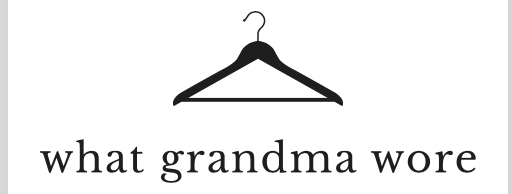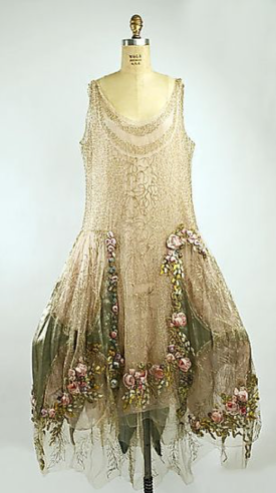Last year whilst researching the dress of debutantes, I encountered a designer which I previously had little knowledge of. The name was Boué Soeurs, and the dress I uncovered was the garment pictured below:
Above Images: C.I.68.48a–e. Boué Soeurs presentation ensemble. c1928. Silk, metallic threads; silk; feathers, cellulose nitrate. The Metropolitan Museum of Art, New York.
When I found the gown, I had only little information to go by. According to The Met Museum, Boué Soeurs, consisted of two individuals, who were sisters. They were renowned for detailed, intricate lace and embroidered designs. The pair and their Parisian fashion house was active from the late 19th century, and beginning of the twentieth century, up until the late 1950’s.
I searched the online collections of various museums in order to discover more about the pair. Their garments are delicate and richly adorned. Most museums had only required garments produced in the 1920’s, but it was clear from the accessioned objects that the sisters during this period chose to use exquisite, romantic materials, often preferring to use nude or pastel coloured fabrics for their gowns.
Above Images: 2009.300.1251a, b. Boué Soeurs court presentation gown. 1922-24. Silk, metal, rhinestones. The Metropolitan Museum of Art, New York.
It was evident from the outset that the Boué Soeurs prided themselves in the detail they used in the creation of their garments. The rosebud motifs in particular were continuously used. The lamé fabric of this gown is embroidered with a vase decorated with sprays of ribbon flowers.
I was also intrigued as to the development of the sister’s more exposing styles. Some of the dresses in The Met collection reminded me of Lucile’s early twentieth century garments, inspired by underwear rather than outerwear. The luxurious silks and thin gauze for me emoted a feminine ideal, focusing on a colour palette full of light shades, laces and florals, in contrast to the sporty ensembles designers such as Chanel and Patou were designing during the 1920’s.
Above Images: 1979.569.42. Boué Soeurs camisole. Early 1920’s. Cotton and silk. The Metropolitan Museum of Art, New York.
Above Images: 1986.5. Boué Soeurs. Silk, cotton, acetate. The Metropolitan Museum of Art, New York.
Without sounding too self-indulgent, as I prefer my posts to focus on the garments rather than my own opinions, the designs of Boué Soeurs appealed to my personal aesthetic tastes instantly. I became frustrated with the lack of research online (other than with a wonderful blog post courtesy of the FIDM museum, and other snippets of information found from several independent fashion history bloggers), and availability of academic work available at my university library. These ladies seemed to be a mystery!
Here are the key points surrounding the origins of Boué Soeurs:
- The two sisters were named Madame Sylvie Montegut and Baronne Jeanne d’Etreillis. The business was called after their maiden name (Boué).
- The house was opened in 1899, and the sisters later had successful businesses in New York.
- Information suggests that the gowns were extremely expensive due to their lace work which became specifically commissioned for the sisters.
- The aesthetic style of the sisters garments appears to go no further than the popular fashions of the 1920’s and 30’s.
If anyone knows of any further sources I can consult to find more about the Boué Soeurs, please let me know! I love the work they have created, and I feel it isn’t fair that designers have faded into history – they deserve to be researched due to their talents and contribution to the history of fashion.









